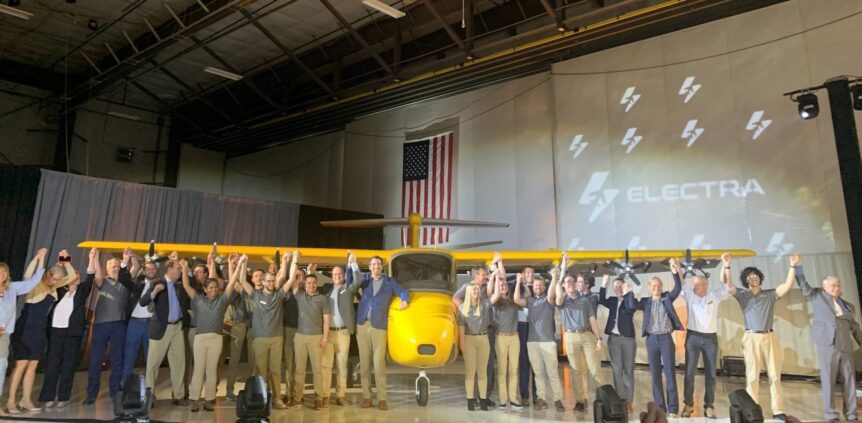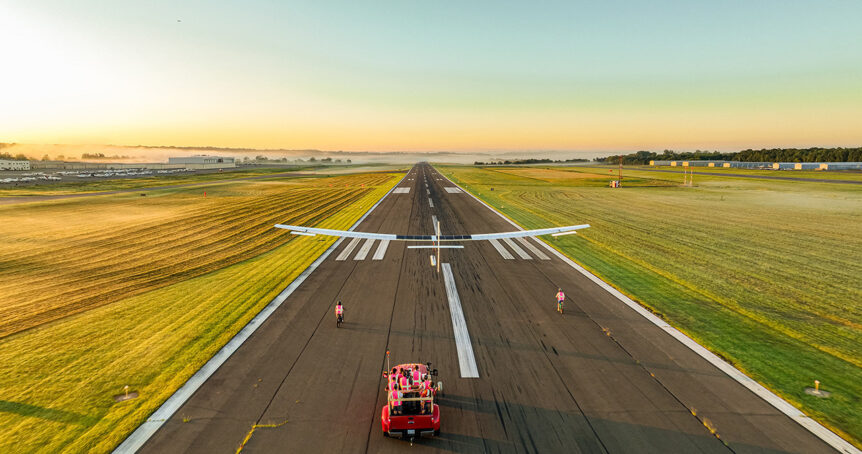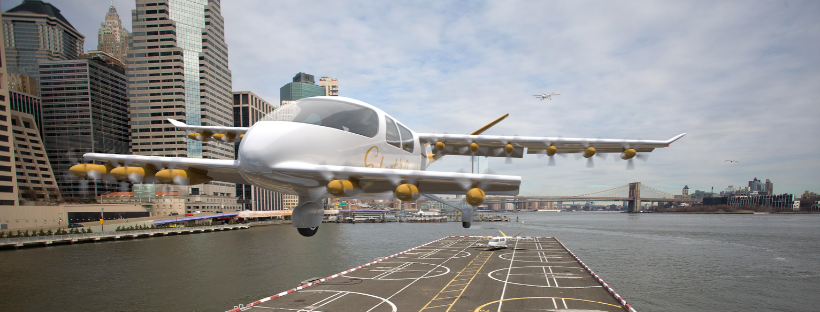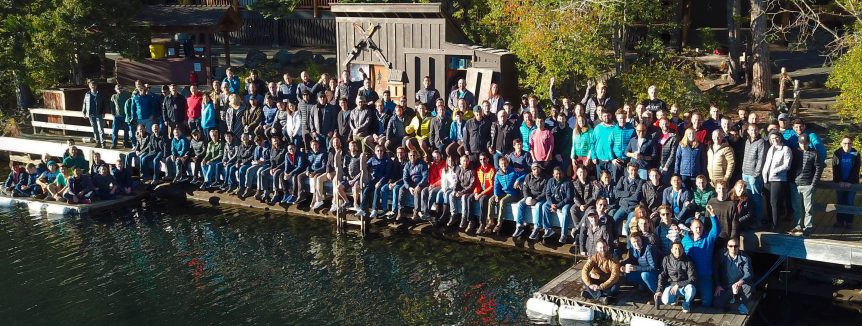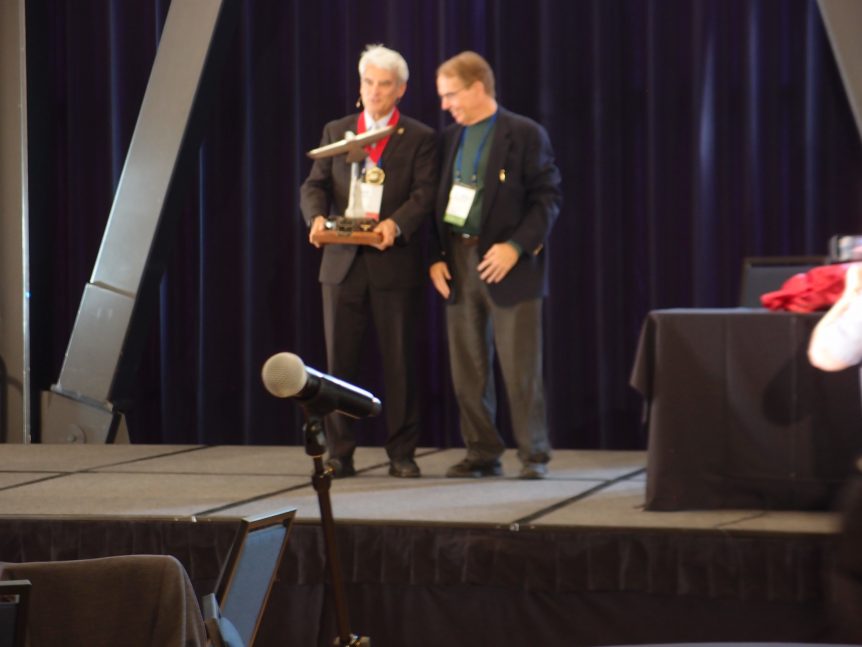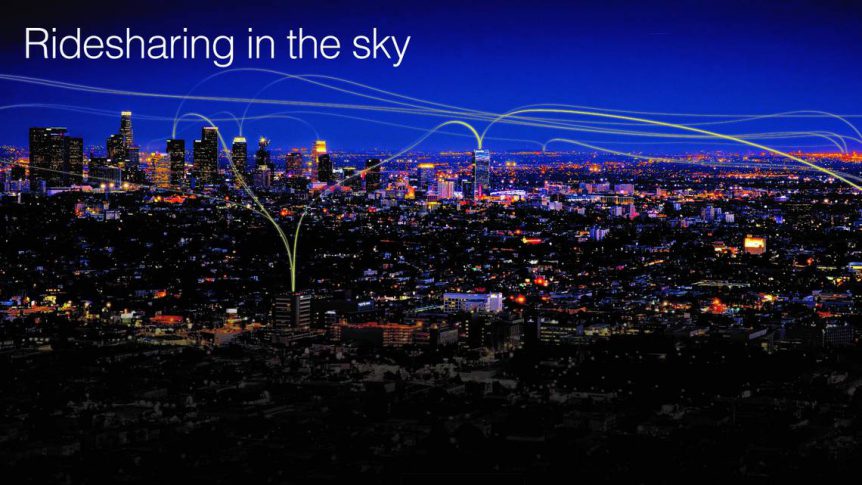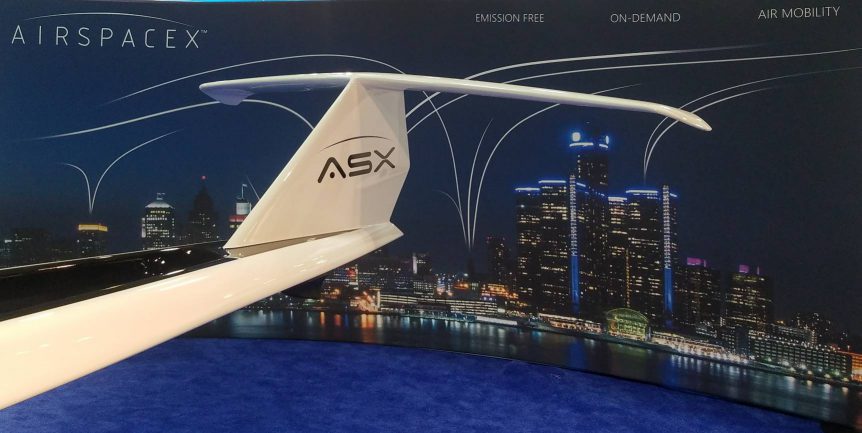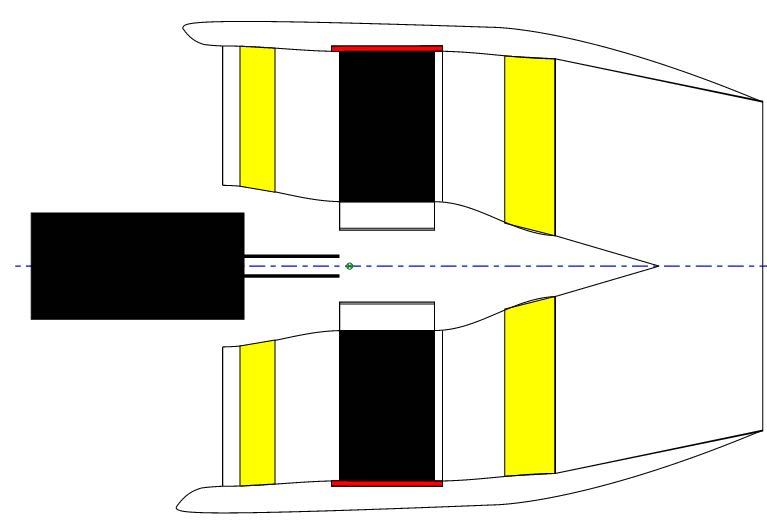Starting small, Electra Aero has rolled out a two-seat demonstrator of its multi-motor, blown-lift technology. Bright yellow, the EL-2 “Goldfinch” celebrates “the beloved, nimble American Goldfinch bird indigenous to North America,” according to the company. Its full-scale production aircraft will carry nine. John S. Langford, Founder and CEO of Electra.aero explains, “In the three years since we founded Electra, we’ve designed our eSTOL aircraft, validated our blown lift technology with a sub-scale demonstrator, and run a fully integrated test of our 150-kilowatt hybrid-electric generator at full scale. Now we’re ready to test the entire system with this technology demonstrator aircraft. We can’t wait to fly this plane and show the world what our eSTOL aircraft can do.” Chris Courtin, Chief Engineer on the technology demonstrator project, explains the ambitious aircraft, a two-seat version of which will fly this year. Electra notes its “proprietary blown lift technology uses eight motors to provide additional wing lift, and hybrid-electric power that provides internal …
Electra Flies Dawn One, Solar Powered Climate Observatory
Dawn One is a solar-powered climate observatory, one of many to come and an outgrowth of a long career for John Langford, Electra Aero’s CEO, and collaborator with Professor James G. Anderson of Harvard University. A seeming callback to John Langford’s human-powered aircraft from his MIT days, Dawn One is a 90-foot span unmanned aircraft system (UAS) destined to fly at stratospheric altitudes (49.000 feet maximum) while observing data for quantitative forecasts of risks in the climate. We see its first flight from the Manassas Regional Airport in Virginia on September 9. The assistants in hot pink and orange vests are Hokies, part of Virginia Tech University, and whose name is explained in a lengthy Wikipedia entry. The “solar-battery hybrid electric research aircraft” is part of the Stratospheric Airborne Climate Observatory System (SACOS) program. The program will consist of “an ensemble of solar powered aircraft operating for months in the stratosphere,” each “ each “focused on critical climate observing missions …
eCSTOL: Longer Range Commutes on Less Power
Competition is growing in the electric Vertical Take Off and Landing market, with 407 potential builders listed in eVTOL News. Vertical flight takes power, though, and with available batteries limiting range, most such vehicles can make only short hops. Alternatives that allow speedier, longer flights, in the form of electric Conventional Short Take Off and Landing (eCSTOL) aircraft are in development. Such craft offer the benefit of requiring less power for takeoffs and climbs, being more aeronautically-based than power-based. Airflow, for instance, claims operating costs for their eCTSOL craft is one-third that of an eVTOL or helicopter. We will look at three eCSTOL craft that seem to making headway at this time. The infrastructure (in two cases below) to support their flight may already exist. Airflow Curt Epstein, writing in Future Flight, under the headline, “Infrastructure Needs for eSTOL and eVTOL Aircraft May be Closer than Imagined,” notes the “intense study” being undertaken. Speaking at the Vertical Flight Society’s Electric …
John Langford’s New Direction
John Langford has been a leading exponent of new directions in aeronautical technology. From his work as project manager with MIT’s human-powered Daedalus project to his executive leadership with Aurora Technologies, he has crafted electric, autonomous, and downright astonishing vehicles. The following video is long, but insightful and exciting. We see Langford in several early scenes. Having seen Daedalus conquer the Sea of Crete like the mythical first airman, Langford spread his reach into ever more technologically complex problems. His resume is deceptively short, since he’s held only two jobs since leaving college. His LinkedIn bio is brief, but telling. “John Langford is the founder and CEO of Electra.aero, a startup developing hybrid electric aircraft for regional mobility. He founded Aurora Flight Sciences in 1989 and served as Chairman and CEO through 2019. He is a member of the National Academy of Engineering and serves as President of the American Institute of Aeronautics and Astronautics (AIAA).” The video gives a …
Joby and Uber Elevate Form Partnership
In a new partnership agreement, Uber Elevate recently added Joby Aviation to its stable of aircraft companies which are to supply craft for its Urban Air Mobility program. Joby builds electric motors, 12 of which line the wing of NASA’s X-57 Maxwell, with two larger motors for forward thrust when the small units are shut down. This inventory of electric motors on the NASA project gives Joby a certain entrée to interest from the Urban Air Mobility movement, and it’s received that interest from Uber. Well financed in its own right, Joby has committed to meeting Uber’s desire to have operating sky taxis in the air by 2023, as reported by Andrew J. Hawkins in The Verge. We have written about Joby several times in the past, including this 2014 report that includes an early rendition of the Maxwell project. Much has happened for Joby since then. Hawkins picked up the story in 2018. “Joby is the brainchild of inventor …
The 2019 Personal Aircraft Design Academy (PADA) Trophy
Honoring John Langford If one stays with a line of work long enough, one will accomplish mighty things. That’s certainly true for John Langford, Chief Executive Officer for Aurora Flight Sciences. His decades-long career, start his decades-long career, starting at Massachusetts Institute of Technology and culminating his company partnering with Boeing, has explored almost every aeronautical discipline. For this perseverance, he was awarded the 2019 Personal Aircraft Design Academy (PADA) Trophy. Aurora Flight Sciences’ Chief Technology Officer, Tom Clancy, was on hand at the 2019 Sustainable Aviation Symposium at UC Berkeley to accept the award for Langford. Clancy has worked with Langford since their MIT days, building and flying several human-powered aircraft, including the 1974 Daedalus. That aircraft flew the 74 miles from Crete to Sicily over the Mediterranean Sea, still the human-powered distance record. He and Langford went on to design, build, and fly an astonishing range of aircraft. Putting solar cells on Daedalus gave them a pilotless airplane …
Aurora’s Odysseus – Large Enough for Its Mythic Name
Named for a mythical hero like its evolutionary predecessors, Aurora Flight Science’s Odysseus is a huge, but ephemeral thing. A wingspan larger than the largest 747’s and a weight no greater than a Smart Car’s (around 1,500 pounds) means this airplane will be slow and frail. A carbon fiber tube structure covered by lightweight Tedlar™ resembles the construction of Solar Impulse, but without the bulk of carrying a pilot. Since its antecedent was the world record holding distance champion in human-powered aircraft, the manner of flight is no surprise. Its intended altitude is. Odysseus takes it to the stratosphere. It’s the latest revelation in a thirty-year exploration of low-powered, extreme-endurance aircraft. Before he founded Aurora, John Langford led a group of Massachusetts Institute of Technology (MIT) students in a four-year program that developed three human-powered craft – the Daedalus series. In its final iteration, Daedalus set the still-extant world record for human-powered flight distance, 72 miles emulating the flight of its …
Referencing Uber’s Elevated Challenge
We can tell things are heating up in the electric aircraft marketplace. Established aircraft companies are investing (Boeing and Airbus for starters), growing numbers are planning for electrified and autonomous future flight (Uber Elevate Summit), and an absolute plethora of new designs are tumbling forth from an aeronautical cornucopia. Their video of an Uber sky taxi ride illustrates the charm of the idea. A Common Reference Uber provided two common reference eVTOL (electric vertical takeoff and landing) reference models for partners to emulate. Both seem to share a common passenger pod with an unusually long tail boom. Perhaps taking the 2011 Green Flight Challenge as his reference point, Mark Moore explained how Uber inspires others to give their best efforts to create several plausible vehicles. The American Institute of Aeronautics and Astronautics (AIAA) reports, “’We will never build a vehicle, but we want to make sure that our partners who are building vehicles are successful and that these aircraft are …
AirSpaceX is NOT an Elon Musk Company
Airspace Experience Technologies, LLC (AirSpaceX) is a subsidiary of Detroit Aircraft Corporation (DAC), and as far as this editor knows, not related to Elon Musk’s SpaceX. A little closer to earth, the planned low-altitude perambulations of its two creations reflect the growing interest in “sky taxis.” A Holding Company Brought Down by the Great Depression Jon Rimanelli, founder and CEO, sees Detroit Aircraft Corporation as an attempt to return the Motor City to its former glory days as a leader in aircraft development. He notes that for a few brief years, DAC held controlling interests in the Ryan and Lockheed Aircraft companies, and created the only metal-clad airship in aeronautical history, The ZMC-2. He explains, “Back in the ’20s, Detroit was the center of the universe for aviation. Detroit Aircraft Corporation was the largest aircraft holding company in the world. They owned the biggest brands,” Its technology may have been underappreciated in its time, but the modern DAC is promoting …
Doing More with Less – BLI on a Big Scale
Hybrid and electric cars sell because they lower operating costs for the owner. Designers and manufacturers sort out ways to increase efficiency, including streamlining, using low-rolling-resistance tires, and making structures lighter. An added technology, boundary layer ingestion (BLI) may add to aircraft efficiency. NASA and industry leaders are working on equivalent solutions for aircraft, and airplanes will end up as different from today’s designs as Toyota Priuses and BMW i3s are from Ford Falcons or Chevrolet Corvettes. NASA proclaims, “An aviation renaissance, one focused on energy efficiency and economic impact, is on the horizon, and it’s changing how engineers look at aircraft power and design.” Jim Heidmann, a manager of NASA’s Advanced Air Transport Technology Project (AATT), says, “I feel we are at a tipping point in commercial aviation. We are exploring and developing game-changing technologies and concepts for aircraft and propulsion systems that can dramatically improve efficiency and reduce environmental impact and accelerate the introduction of new aircraft.” Think of …

